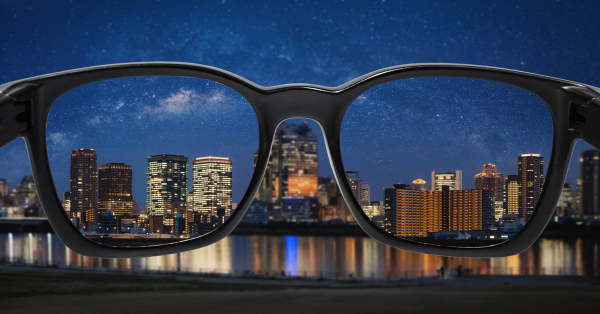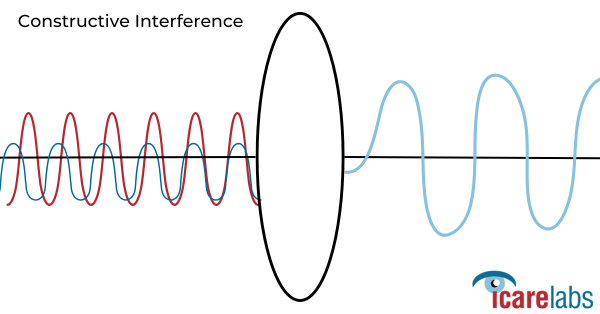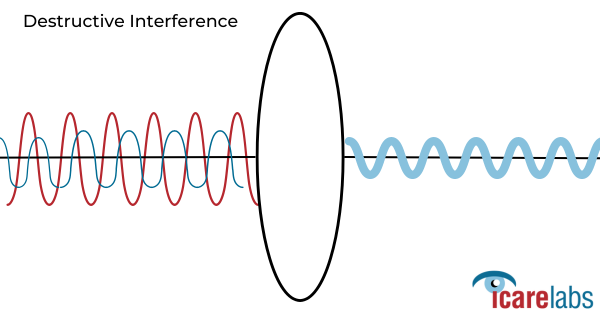The Science of AR Coatings

Over the years working with ECPs, I was always shocked to hear how many offices don't sell or even offer anti-reflective coating to their patients. Even with more budget-friendly offices, you are doing a disservice to your patients by not at least offering it. When light hits a medium with a different index of refraction than the one that it is currently moving on, some of it is reflected. For instance, we have a polycarbonate lens. When light hits this lens, there is a loss of about 4% on each surface from air to poly and poly back to air, totaling 8% of light reflected from the viewer and only 92% of total transmission.
Anti-reflective coatings prevent this from happening by using something called destructive interference, which overall allows more light to pass through the lens.
You may be wondering, "What in the world is destructive interference?" I thought the same thing before I truly dove into it. Basically, light is a wave and moves in a phase. When two rays of light overlap, they combine and create a new wave with new characteristics. Depending on how the rays line up, either constructive or destructive interference can happen.
Constructive Interference

When two waves line up almost identically, with the peaks and troughs overlapping, it is "in phase." This resulting wave is a product of constructive interference and has an additive effect causing the peaks and troughs to combine, resulting in a bigger wave.
Destructive Interference

When two waves reflect in a way that the peaks of one wave match with the troughs of another, it is out-of-phase. This resulting wave is a product of destructive interference and has a subtractive effect causing the peaks and troughs to take away from each other, resulting in a smaller wave.
Destructive interference basically causes the wavelengths to cancel each other out before they exit the surface, allowing for more transmission of light.
Other Benefits Of AR Coatings
- Improving your vision by reducing bothersome glares, reflections, and halos.
- Provide comfort during prolonged computer use.
- Reduce the effects and symptoms of digital eye strain.
- Increase aesthetics by making your eyes more visible behind your lenses.
- Providing less glare when driving at night.
As you can see, there are many benefits to AR coatings. As an ECP, it is our duty to educate and inform our patients of these benefits and allow them the option to choose. In most cases, a well-educated patient will purchase this upgrade while a poorly educated patient will refuse. Share the benefits based on your patient's lifestyle and needs.
Increasing your AR penetration will also increase your patient satisfaction. You will see more return business and better word-of-mouth advertising.
"A satisfied customer is one who will continue to buy from you, seldom shop around, refer other customers and in general be a superstar advocate for your business" - Gregory Ciotti - Shopify

